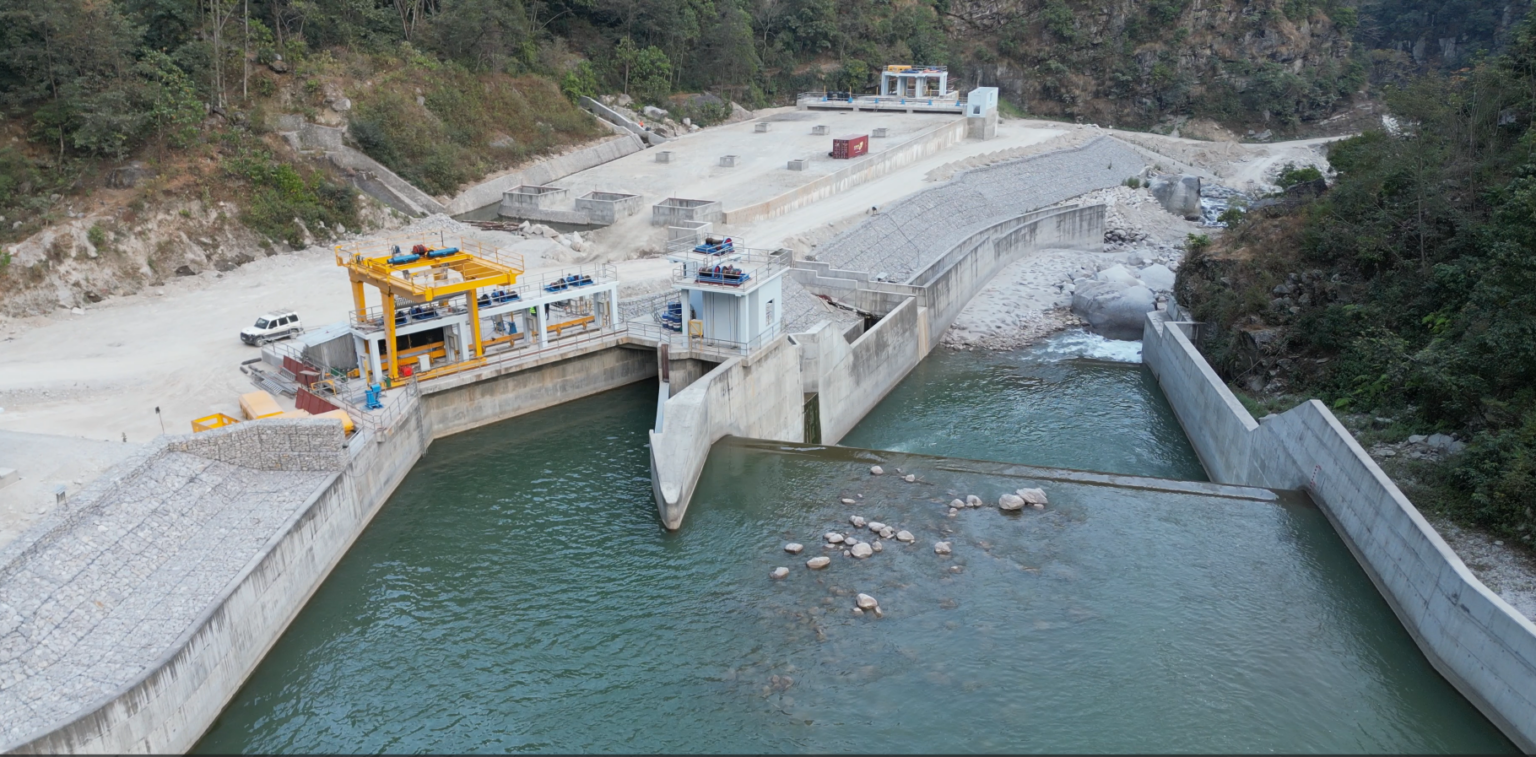Green Hydrogen: The future fuel & its potentiality in Nepal

Krishna Dhanusk
Introduction:
Hydrogen gas was discovered in the 18th century by a scientist named Henry Cavendish. Hydrogen is the most common and the lightest element in the universe, consisting of only one proton and one neutron per atom. Hydrogen shows up in multiple compounds, the most common, which is water. Low emissions can be achieved using hydrogen, and it is one of the main advantages of this chemical element. Due to this, hydrogen has tremendous potential to significantly impact the ongoing energy transition and become a notable decarbonization enabler. Hydrogen is a colorless, odorless, and tasteless gas that makes up about 1% of Earth's atmosphere. It is highly flammable and can form explosive mixtures with air. Hydrogen is widely used in various industrial processes, such as the production of ammonia, methanol, and other chemicals. It is also used as fuel for vehicles and as an energy source for electricity generation.
Green hydrogen refers to hydrogen gas that is produced through a process called electrolysis, where water (H2O) is split into hydrogen (H2) and oxygen (O2) using electricity generated from renewable energy sources like solar, wind, or hydropower. The history of green hydrogen is closely tied to the development of hydrogen as an energy carrier and its potential as a clean and sustainable fuel.
In the 1950s and 1960s, hydrogen became popular as a fuel for rockets because it can provide a lot of energy and burns cleanly.
Currently, the cost of green hydrogen production is estimated to be around $3 to $6 per kilogram in regions with favorable renewable energy conditions. However, costs may be higher in areas where renewable energy is less abundant or more expensive.
The productivity of green hydrogen refers to the amount of hydrogen produced per unit of input energy (typically measured in kilowatt-hours, kWh). It is influenced by the efficiency of the electrolysis process and the capacity of the equipment used. In the deployment of clean hydrogen alternatives, the transparency of energy products is essential. The main challenge for green hydrogen is its high production costs compared to grey hydrogen
Why is everyone talking about green hydrogen?
On December 12, 2015, the 21st Conference of the Parties (COP21) of the United Nations Framework Convention on Climate Change (UNFCCC) was held in Paris, France. Generally, this international treaty on climate change is called “The Paris Agreement”. All the participants countries agreed on one point that global warming is real and must follow towards a net zero carbon policy to save our blue planet. The agreement came into force on November 4, 2016, after it was ratified by enough countries to reach the required threshold of 55 parties representing at least 55% of global greenhouse gas emissions.
The primary goal of the Paris Agreement is to limit global warming to well below 2 degrees Celsius (3.6 degrees Fahrenheit) above pre-industrial levels and to pursue efforts to limit the temperature increase to 1.5 degrees Celsius (2.7 degrees Fahrenheit). This is essential to avoid the worst impacts of climate change, such as extreme weather events, rising sea levels, and loss of biodiversity.
The Paris Agreement represents a significant milestone in the global response to climate change, as it brought together nearly all the world's nations in a collective effort to tackle the pressing issue of climate change. However, achieving its ambitious goals requires sustained and increased efforts from all countries, as well as cooperation between governments, businesses, and civil society to transition to a low-carbon and climate-resilient future.
Types of hydrogen
Grey hydrogen: The most common grey hydrogen production process is called steam reforming of natural gas (NG). In the Steam Methane Reforming process (SMR), methane reacts with water and gives carbon dioxide and hydrogen as reaction products. (Federal Ministry for Economic Affairs and Energy 2020: 28). The main disadvantage of grey hydrogen is a fossil fuel as a feedstock of the process and consequent carbon formation during the reforming. The most significant advantage of grey hydrogen is its cost-effectiveness. According to the IEA, the cost of grey hydrogen is approximately USD 2/kg.
Blue Hydrogen: While grey and green hydrogen are the two best-known categories of hydrogen, some subcategories have been presented to reflect the properties between clean and polluting hydrogen. This category is blue hydrogen which is not as clean as green hydrogen but more environmentally friendly than grey. Production of blue hydrogen mostly corresponds to the process of grey hydrogen. Fossil fuels are usually raw materials, but blue hydrogen production processes use Carbon Capture and Storage (CCS) Technology. It means that carbon emissions released in the process are recovered and have not entered the atmosphere.
the potentials of green hydrogen production from hydropower energy
and its application in electricity regeneration and replacement of petroleum products from the transportation sector in Nepal. The potential surplus hydroelectric energy, and hydrogen production potential from the surplus energy considering different scenarios, is forecasted for the study period (2022-2030). The results showed that hydrogen production potential ranges from 63,072 tons to 3,153,360 tons with the utilization of surplus energy at 20% and 100% respectively, in 2030. The economic analysis of hydrogen from hydropower projects shows that electricity is valued based on per kg of hydrogen when the surplus electricity is provided at feasible lower price values compared to the US $1.17. It is found from research of Kathmandu University that hydrogen production from spilled hydro energy and its use in the transportation sector and independent electricity generation is a niche opportunity to lead the country towards sustainable energy solutions and an economy running on hydrogen.
Global energy-related carbon emissions reached the historic high of 36.8 (billion) gigatons of CO2 in 2022. The emissions from all fossil fuels were increased: the power sector alone accounted for nearly two-thirds of the emission growth. The increased carbon emission led to the temperature rise and is expected to be 1.5 C above the pre-industrial level in 2100. To restrict this temperature rise, there is need for a decline in the global emission by about 45% from 2010 levels by 2030, reaching net zero by 2050. Hydrogen (H2) is fast emerging as an alternative energy carrier with the highest heat value of
120-142 MJ/kg compared to 44 MJ/kg of gasoline and 20 MJ/kg of coal. Most of the countries around the world are focusing on green hydrogen technologies to reduce carbon emissions from industries, transport, and commercial sectors. By 2050, it is projected that the green hydrogen aims to exceed 540 million metrics tons with the transportation sector alone contributing to 154 million metric tons of the total share.
Hydrogen production potential from hydropower can be estimated using two basic approaches. The first approach is by assuming a certain percentage of the available economic hydropower potential is utilized in the production of H2 by electrolysis, like the study done in Venezuela. The second approach is to assess hydrogen production potential based on the electricity that would have been surplus and curtailed due to demand reduction or increased production from increase in water inflows during the rainy season in the ROR plants. Studies done following the latter approach have shown that hydrogen production potential from surplus hydro energy is very effective and generates large values from curtailed energy. Nepal is one of the hydro rich countries in the world with huge hydropower prospects. More than 30,000 MW of hydropower projects are at the developmental stage in Nepal. The forecasted domestic demand for electricity is much lower than production within the next decade. It is projected that around 3000 MW of energy is going to be surplus in Nepal by 2030 due to an imbalance in the supply and demand scenario. More than 90% of the hydropower plants in Nepal are run-off-river types. As a result, the existing hydropower has not been run on full capacity utilization and is not able to meet the electricity demand in the country during the dry season. During the rainy season, the hydro energy has been surplus and is being curtailed without generating any values. The energy supply mix shows that fossil-based energy has a share of 25% compared to 7% combination with electricity and renewable energy supply in 2019. Increased capacity utilization of hydropower and producing hydrogen from the hydropower surplus electricity is one of the possible options to addressing the energy distribution problem in Nepal. To generate value, from the future surplus electricity, there is need to initiate the study related to hydrogen production potential in Nepal and in end uses. A study done in 2008 projected that Nepal has the potential to produce hydrogen from existing hydropower plants during the off-peak load by utilizing surplus electricity. The possibility of utilizing produced hydrogen energy to replace the existing fossil fuels was also done in the study. The result indicated the potential of producing 8370 tons of hydrogen when 20% of surplus energy in 2005 was utilized, and that hydrogen has the potential to replace 31,680 kL of gasoline. As there has been quite a rapid development in hydrogen production technologies compared to that of 2008, a new study is needed to identify the future potential of green hydrogen production and end-use for a hydro-rich country like Nepal. Nepal needs to focus on utilizing abundant hydro-energy to produce green hydrogen for sustainable energy solutions and for the transition to a hydrogen-based economy, balancing the future energy distribution scenarios: increasing the share of renewables and electricity.
Hydrogen fuel cells are cells that contain hydrogen as fuel. Hydrogen fuel is a zero-emission fuel that releases energy during combustion or through electrochemical reactions. Fuel cells and batteries produce an electric current through a chemical reaction, but a fuel cell will produce energy if there is fuel, thus never losing its charge.
For green hydrogen to be successful and achieve a significant position in the energy market, extensive demand in several different industries is required. Hydrogen can be exploited in the numerous sectors of which transport, power generation, building's heating, industry energy, and industrial feedstocks are considered primary consumers. Decarbonization is exceedingly challenging in specific sectors such as transportation. Green hydrogen could provide a possible solution to this challenge as a clean fuel option. One of the main advantages of hydrogen is its lightness. One kilogram of hydrogen contains approximately 150 times more energy than the equivalent weight of a lithium-ion battery. When a more extended range is desired, electric cars' mass needs to be increased due to larger batteries, while the mass of hydrogen fuel cell cars remains on the same level. There is a strong focus on minimizing the weight to achieve the best possible fuel consumption and aircraft performance in aviation. Therefore, hydrogen as a fuel is a desirable option from an aviation point of view. In addition, hydrogen is also considered to become one of the primary fuels for road traffic. Greenhouse gas emissions in transportation have increased in previous decades while overall emission levels have reduced in the EU.
Where does India stand regarding green hydrogen production?
India has set ambitious renewable energy targets and has been making efforts to increase its renewable energy capacity. The country aims to achieve 450 gigawatts (GW) of renewable energy capacity by 2030, and green hydrogen could play a crucial role in achieving this goal. To facilitate the development of green hydrogen, the Indian government has been working on policies, regulations, and incentives to encourage investment in the sector. There have been discussions on creating a National Hydrogen Energy Mission to promote research, development, and deployment of hydrogen technologies.








तपाईको प्रतिक्रिया